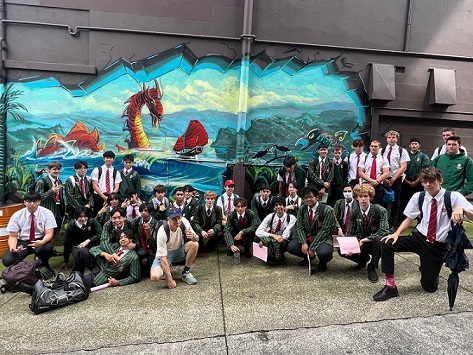The Role of Online Learning in Advancing Art History Studies

Art history is an enriching field that bridges the past with the present, offering profound insights into cultures, societies, and creative expression. In recent years, online learning has revolutionised the way art history is studied, providing opportunities for learners to explore the discipline with flexibility and depth. This article explores how online platforms have enhanced art history education, catering to diverse learners and fostering a global appreciation for the arts.
Accessibility in Art History Education
Traditionally, online art history courses and academic institutions were the primary gateways to studying art history. For many, this created barriers to accessing resources and expert instruction. Online learning has significantly altered this sphere. Through virtual classrooms, learners from all walks of life can now delve into the study of art history without geographic or financial constraints.
Digital platforms host diverse resources, including recorded lectures, curated readings, and virtual museum tours. These tools allow students to access content at their own pace, making learning adaptable to individual schedules. This accessibility ensures that anyone with a passion for art history can pursue their interests, regardless of location or background.
A Global Perspective on Art History
One of the most remarkable aspects of studying art history online is the global perspective it offers. Through virtual courses, students can explore art movements from different cultures and time periods. They gain exposure to perspectives that might not be readily available in traditional settings.
For example, virtual art history programs often feature contributions from experts worldwide, providing learners with a diverse range of viewpoints. Students can explore Italian Renaissance masterpieces, African tribal art, or Japanese ukiyo-e prints without leaving their homes. This interconnected approach enriches understanding and encourages a broader appreciation of artistic traditions.
Innovative Tools Enhance Learning
Online platforms have embraced innovative technologies to elevate art history education. Interactive tools such as augmented reality (AR) and virtual reality (VR) enable students to examine artworks in unprecedented detail. These technologies provide a virtual museum experience, allowing users to “walk” through galleries or zoom in on specific details of a painting.
Additionally, many online courses incorporate multimedia elements such as videos, podcasts, and digital timelines. These features cater to various learning styles, making complex concepts more engaging and easier to grasp. The integration of technology has transformed art history education into a dynamic and immersive experience.
Flexible Learning for Modern Lifestyles
The demands of modern life often make traditional classroom-based education challenging. Virtual art history studies address this by offering unparalleled flexibility. Students can learn at their own pace, fitting coursework around personal and professional commitments.
This flexibility also benefits those seeking to supplement their careers with specialised knowledge. For example, professionals in museums, galleries, or auction houses can deepen their expertise without stepping away from their roles. Online learning makes it possible to balance education with other priorities, making art history studies accessible to a wider audience.
Practical Applications of Online Learning
Many online platforms are designed to equip students with practical skills alongside theoretical knowledge. For instance, some courses emphasise research techniques, critical analysis, and visual literacy, which are essential for careers in curation, conservation, or academia.
Learners can also develop portfolios or complete projects that mirror real-world applications. Whether analysing an artwork’s historical context or curating a virtual exhibition, these practical exercises prepare students for the professional world. By combining academic rigour with practical insights, online learning creates well-rounded graduates ready to contribute meaningfully to the art community.
Connecting with a Community of Learners
Online education fosters a sense of community that transcends geographical boundaries. Through discussion forums, virtual study groups, and live webinars, students can connect with peers and instructors from across the globe. These interactions provide opportunities for collaboration, debate, and networking.
This sense of connection enhances the learning experience by exposing students to diverse ideas and perspectives. It also builds a supportive environment where learners can share insights, ask questions, and grow together. For those passionate about art history, this global network becomes an invaluable resource for both academic and personal enrichment.
Comprehensive Online Courses for In-Depth Learning
These art history courses provide a structured curriculum for learners interested in exploring various artistic movements, historical periods, and cultural contexts. Students can access a wide range of resources including detailed video lectures, curated readings, and virtual museum tours. By participating in these courses, learners can deepen their understanding of how art has shaped human history while developing valuable analytical skills and a more nuanced appreciation of diverse artistic traditions.
Online learning has redefined how art history is studied, making it accessible, flexible, and engaging. By breaking down barriers and incorporating innovative tools, online art history courses have opened the doors to a broader understanding of the arts. Whether pursuing a career in the field or exploring a personal passion, students can benefit from the unique advantages offered by these platforms. In today’s interconnected world, the study of art history has never been more exciting or accessible. Through online courses, learners are not just observing the past—they are participating in a vibrant, evolving conversation about culture and creativity.












